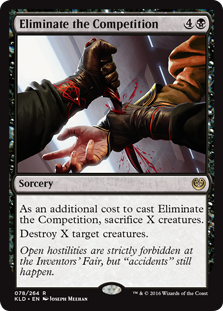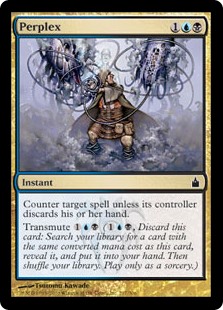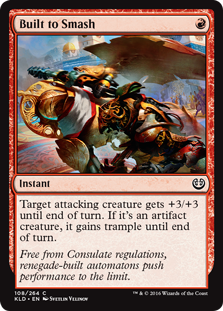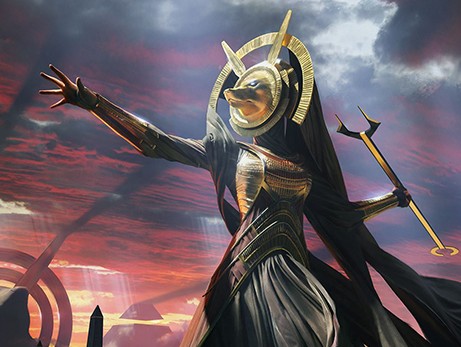Today I want to talk about a topic that few rarely discuss, and that's how to pick the right deck at the Pro Tour. I’ve come a long way since I started playing at the Pro Tour in 2011 (Paris), and have played in exactly 13 so far. One of my favourite Magic stats websites is MTGPTResults.com, and you can see my results by clicking here.
Now for those of your curious enough to click that link, you would have noticed that I have a couple great Pro Tour finishes (12th, 20th and 22nd). When I consider those finishes versus the ones where I was only able to walk away with a few dollars or an extra Pro Point, I noticed a big difference in my constructed deck choice. But before we go there, does this sound like the average competitive Magic player you’re used to?
- You want to win every match.
- You want to show up to every tournament with the best deck.
- You want to gain every advantage you can in deck construction, so giving yourself the most play is high on your priority list.
- You want to outsmart your opponents.
- You don’t like to be attacking unless it's with creatures that don't become obsolete in the late game.
- You like playing haymaker spells that let you take control of a game
- You like playing fancy combo decks that let you win games out of nowhere.

All of the above have applied to me in many tournaments, and I have a reputation for having weird deck choices as a result. I’m also very superstitious which causes me to assign meaning to irrelevant factors. In fact, people who have roomed with me at Pro Tours can attest that I would only eat Dominos for every meal since it seemed to correlate with a strong Pro Tour finish.
#DominosSponsorship anyone? 🙂
When I took a step back and looked at the decks I chose for my three best finishes, they were heavily aggressively slanted. Those decks were Naya Aggro at PT Dublin 2013, Dark Jeskai at PT Milwaukee 2015 and RB Aggro at PT Dublin 2017. If I expand my criteria to Pro Tours without a stellar finish, I finished 8-2 or better with aggressive decks and always between 6-4 or 7-3 with slower control/midrange decks. In those cases, my Limited performance kept me near an average performance.
Now why does aggression line up with better win rates at the Pro Tour?
- Newness of Format
Pro Tours used to take place at the onset of a set release. A lot of the cards that were being played opened up new archetypes. When you have a rotation of Standard where you end up losing half of the format and only adding one new set, there isn’t enough information by the Pro Tour to know what the best answers are. This is because the best threats have not been defined yet.
If you show up with medium threats for the tournament, you're still able to leverage the fact that you are playing such a fast deck and can close the game out before it punishes you. However, if you show up with the wrong answers for the tournament, you'll be out of the tournament completely before you even play a match.
There’s an old saying, you can never have a wrong threat but you can have a wrong answer. This summer at Pro Tour Hour of Devastation, if you showed up with four Fatal Push instead of four Grasp of Darkness in your maindeck, you would have gotten slaughtered by every red deck since Hazoret the Fervent was the threat of the tournament. This goes against typical wisdom, as you would think that you need early removal spells to deal with the threats of the mono red deck, but instead you'd just lose to Hazoret on turn four.
Control decks and midrange decks that are full of answers start to show up in balanced and solved metagames so that the selection of answers that they present can effectively deal with the cards their opponents play. It's too risky to show up with a control deck at a Pro Tour, and correctly so; those decks have only won three Pro Tours in Magic history.

- More downtime between rounds
Pro Tours are marathons. Playing eight rounds of Magic against the best players in the world for two days straight is very taxing on even the most tournament ready players. The few weeks leading up to the Pro Tour are full of non-stop testing and brewing, so players are already fatigued prior to the tournament. Players are also subject to conditions that are very different than home since they're eating out more than usual, and their sleeping arrangements aren't as great. When you add the fact that most of the tournaments are at least thousands of miles away, you also have a lot of jet lag sufferers.
To get to Pro Tour Devastation, I had to travel for 24 hours through two flights and a train ride. By the time I got there, I was subject to an absurd 13 hour time zone change that I was only able to adapt to by the time the tournament was over. I also went from drinking protein shakes and eating grilled salmon, to eating McDonalds and Burger King. While my stomach loved it, it didn’t help me get acclimatized and definitely impacted my Pro Tour.
Playing an aggressive deck alleviates the need for you to always be on. Being able to shave 10-20 minutes in most of your rounds will allow you to refuel and recharge before your next match. This lets you stay sharp and prevents burnout, especially when you consider playing in the harshest conditions.
- Playskill is a factor but it is not everything.
Imagine sitting down and playing an hour long match against Yuuya Watanabe. Most players would be terrified of this outcome and, unless you have an incredible deck advantage, the longer the game goes, the more it will favour Yuuya. Playing an aggressive deck lets you put your opponent in spots where they're unable to utilize their play skill to its full extent, as skill is not what keeps you alive, well sequenced removal spells and timing are. In the finals of Pro Tour Amonkhet, you see the best player in the tournament (Yuuya) lose in the finals to Gerry Thompson because he put so much pressure on Yuuya that he had to make bad decisions with his removal spells. In a long game, this would likely not have happened.

- You don't get anything extra for being fancy or winning by a large margin
Just like everyone else who started playing Magic, you start with an aggressive deck and then eventually you get demolished by a well-tuned control deck. At this point, your competitive nature drives you toward playing decks like that, because even in the real world, control makes you feel like you will always win. This builds a notion in your head that aggressive decks are for new and bad players, and control decks are for better, more experienced players.
I've seen some of the best control players in the world pick up aggressive decks and do really well with them. Skills that you’ve gained as a competitive magic player, such as sequencing and playing around cards, can still be utilized in aggressive decks. For example: holding a creature to play around a Wrath of God, or choosing to cast a flexible removal spell early to get in more damage.

It will be interesting to see how the push to have Pro Tours a month after the release will affect the types of decks that do well. But I hope that if you got one thing out of this article, it’s that it is never wrong to be attacking; and early at that.
Have a great week and good luck to everyone in their Ixalan Prereleases! In next week’s article I will make sure to provide you with a primer on the new Limited format, so make sure you tune in then!
Sammy T


